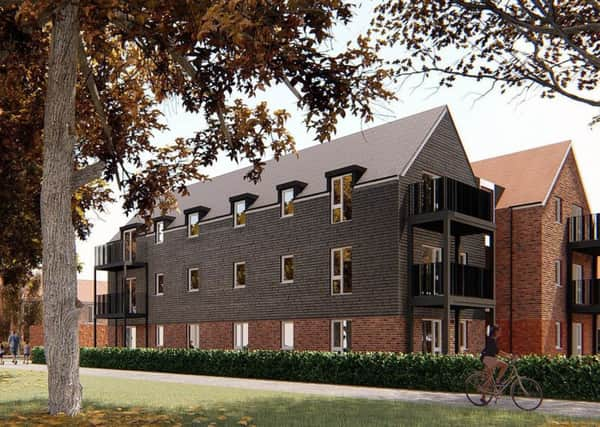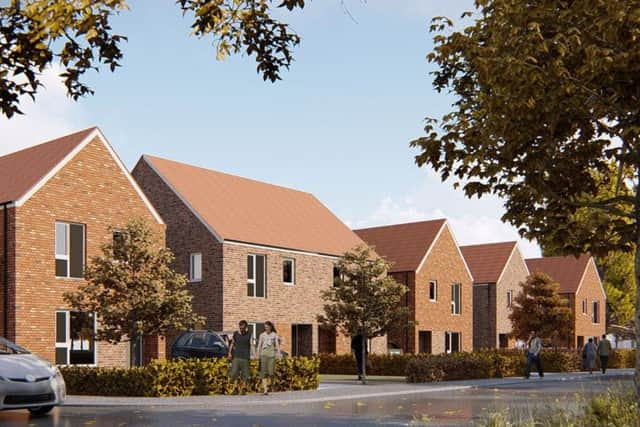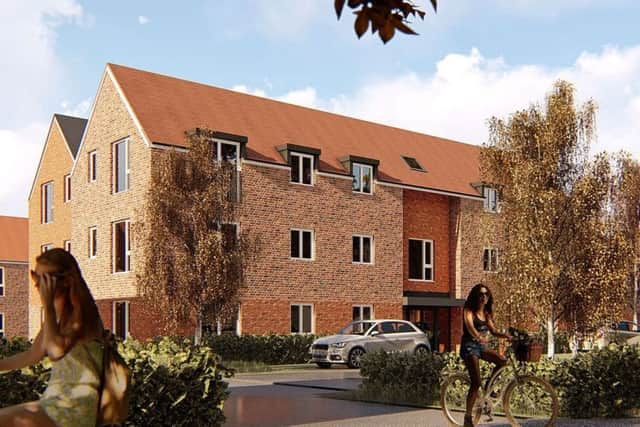'˜Anger' at approval of 160 Graylingwell homes


Outline planning consent for the units on land south of Graylingwell Drive, was granted by Chichester District Council in January 2016, but objectors raised concerns about the changes to the site’s layout and detailed designs.
A reserved matters application was approved by the council’s planning committee today (Wednesday January 17) on the chairman’s tie-breaking vote.
Advertisement
Hide AdAdvertisement
Hide AdCarol Findlay, a Penny Acre resident, described objectors’ anger at the decision, adding: “We do not feel we have been stood up for.


“We feel very let down.”
The proposals include an enhanced cricket pitch, community pavilion, children’s play area and open space.
Concerns centred around the number of properties on the site’s western boundary and the effect this would have on the University of Chichester’s land, the design and material of the homes, and the impact of the three-storey flats on properties in Penny Acre.
Chichester City Council’s Peter Evans echoed a number of these points, while also describing the concentration of the 30 per cent affordable homes in certain parts of the site as a ‘ghetto style of delivery’.


Advertisement
Hide AdAdvertisement
Hide AdHe also described the variety of materials used as creating a ‘mish-mash look to the buildings’.
Keith Morgan, a chartered town planner speaking for the university, explained how they were set to apply for new academic buildings so they can provide new degree courses.
He suggested the scale of housebuilding on the boundary with the university’s land would create a ‘serious and potentially damaging situation for its future prosperity’.
Meanwhile Peter Harris, speaking for Penny Acre residents, argued that the plan they were shown several years ago at the outline stage ‘bears little relation’ to what was before the committee.
Advertisement
Hide AdAdvertisement
Hide AdIn particular he highlighted the ‘dominant’ blocks of flats just off Graylingwell Drive in an ‘environmentally sensitive area’.
But Nicholas Parkinson, design director for developer Hill, said: “We are fully committed to this project and ensuring it achieves a high quality and sustainable community.”
HTA Design’s Simon Toplis, described how they had worked closely with officers on the layout and design of the scheme, which provided a significant amount of open space and retained a large number of mature trees.
Council officers described how the northern block of flats were 38 metres from properties north of Graylingwell Drive, no formal application had been submitted by the university, while the Graylingwell site was an ‘urban setting’.
Advertisement
Hide AdAdvertisement
Hide AdMeanwhile any concerns with materials could be addressed by officers through delegation.
Julie Tassell (Con, Funtingdon) said: “I think we really ought to defer it and go back to the drawing board and produce something everyone is happy with.”
Richard Plowman (LDem, Chichester West) agreed, adding: “I think we all have concerns about the western edge and I would support a deferral for further discussions to make sure long term that we are getting this particular site right.”
He continued: “I believe this is a site we should move as fast as we can but let’s get it right.”
Advertisement
Hide AdAdvertisement
Hide AdHowever officers said they had ‘gone as far as they possibly can’ to address the university’s concerns and saw ‘no reason’ why the relationship between houses and academic buildings ‘can’t work for both sides of the boundary’.
Bob Hayes (Con, Southbourne), chairman of the committee, said: “I’m struggling to support a deferral. The university are requesting us to defer it. Is that for a year or two years?”
The vote to defer the application was tied with five votes each, with Mr Hayes using his extra tiebreaking vote as chairman to defeat the motion.
A subsequent vote to approve the application was also tied with four votes, with Mr Hayes once again using his tiebreaker in favour of the proposals.